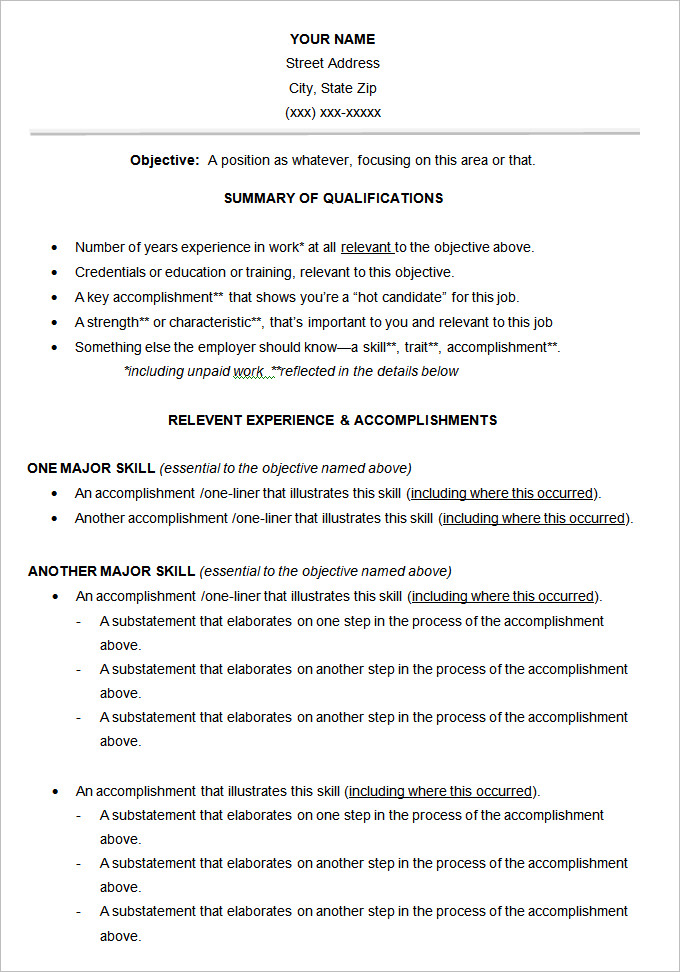


When building a functional resume, you will list these skills and certifications first and how you have used them in practical situations and highlight how you could use them in a paid position. You may have tons of volunteer or hands-on hours from training like Computer Coach, but not much paid work history. Functional resumes tend to highlight skills and their application relating to the job description as opposed to where and when you were previously employed doing the type of job you are applying.įor example, CompTIA A+, CompTIA Network+, and CompTIA Security+ certifications are the first step to breaking into a career in Information Technology. Suppose you are changing careers or graduating from college and your work history relating to the job you want may not be as robust as you might like you will want to consider writing a functional resume. It is not necessary to go back ten years unless the experience is relevant to your job search. Start with your most recent position and work backward listing both dates and responsibilities.

The “Work History” or “Professional Experience” sections of this type of resume are the most pronounced and span between eight to ten years depending on the number of years at your prior institutions. Mostly, this type of resume is ideal for those with a solid, gap-free work history inline with the type of job you are applying for. Which resume you choose depends on your situation and the job for which you are applying:Ī chronological resume is a very common type of resume and just as the name suggests, each section lists the presented items in chronological or date order. The following are the four basic types of resumes to choose from when applying for jobs. Think of it as a non-verbal sales pitch to a potential employer. What is a resume? It’s a summary or a quick snapshot of your skills and qualifications for a job.


 0 kommentar(er)
0 kommentar(er)
